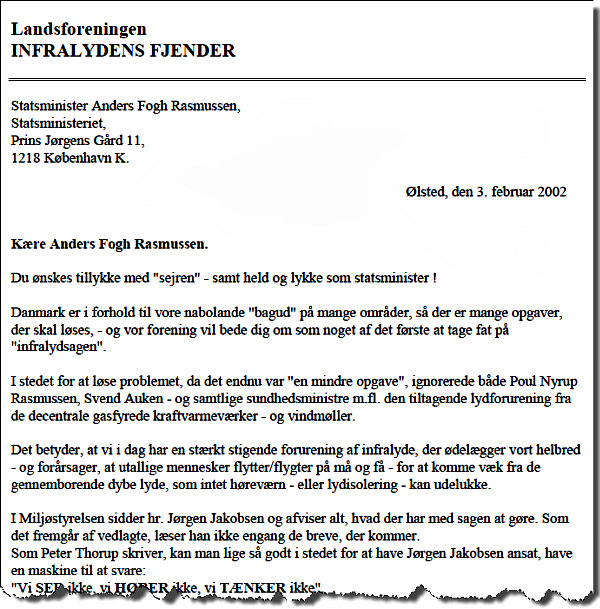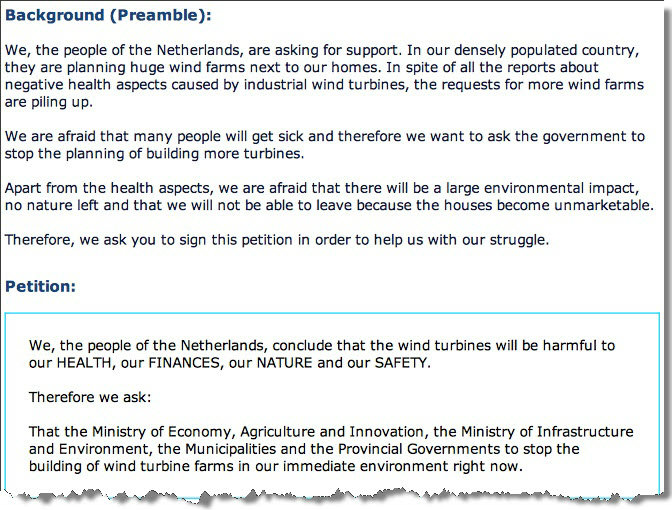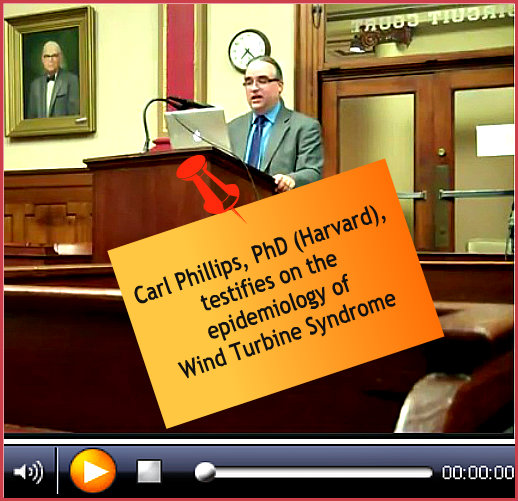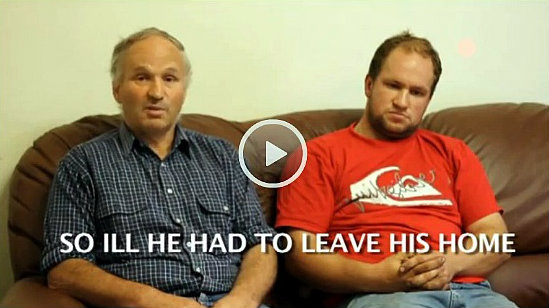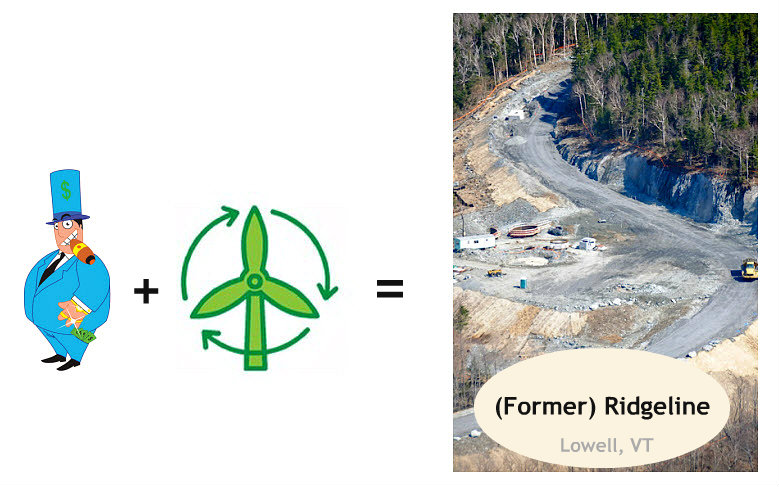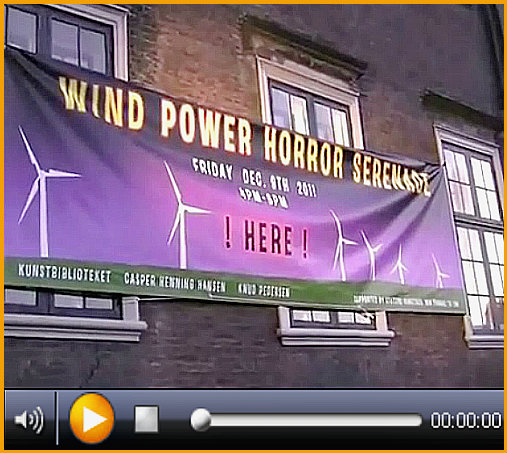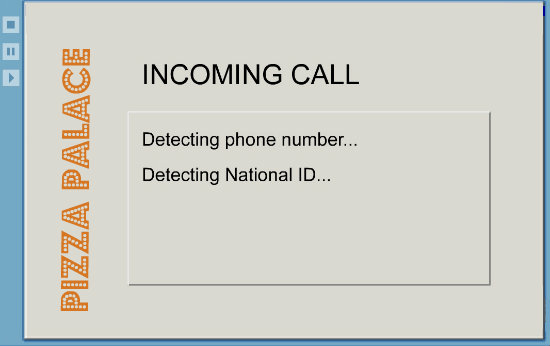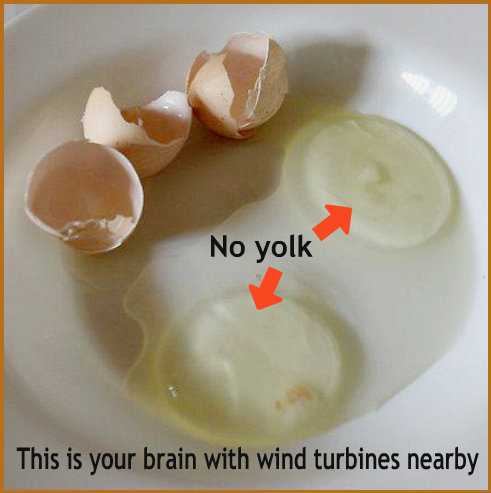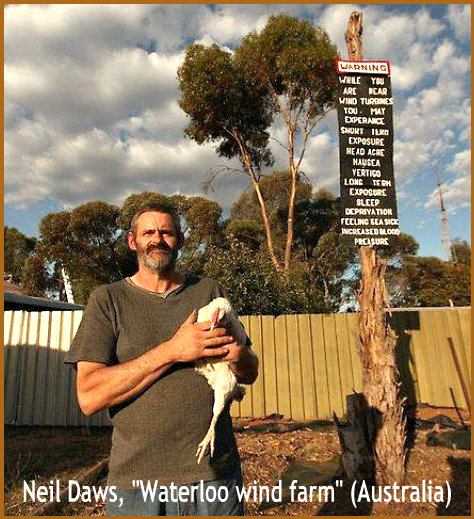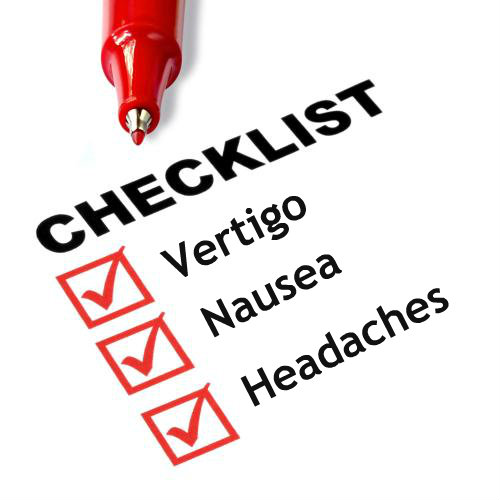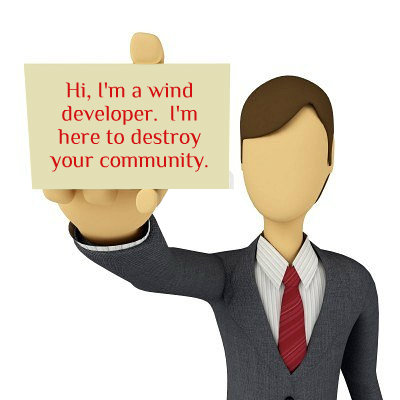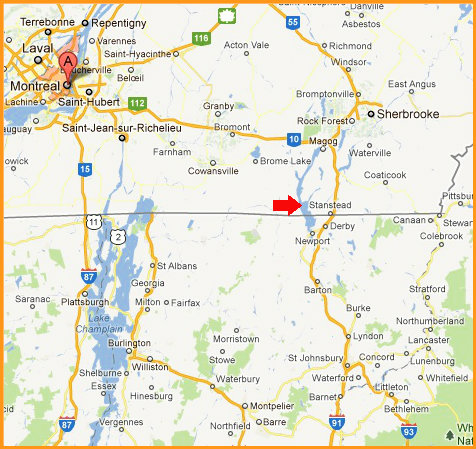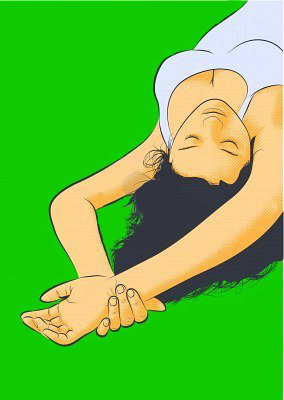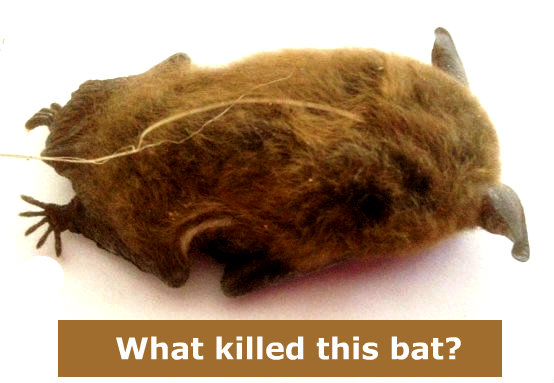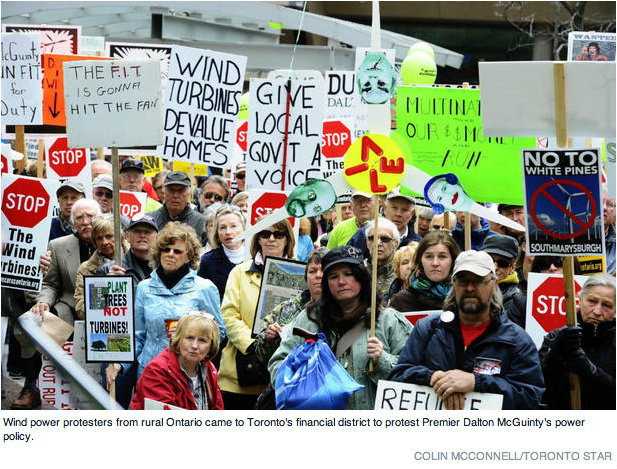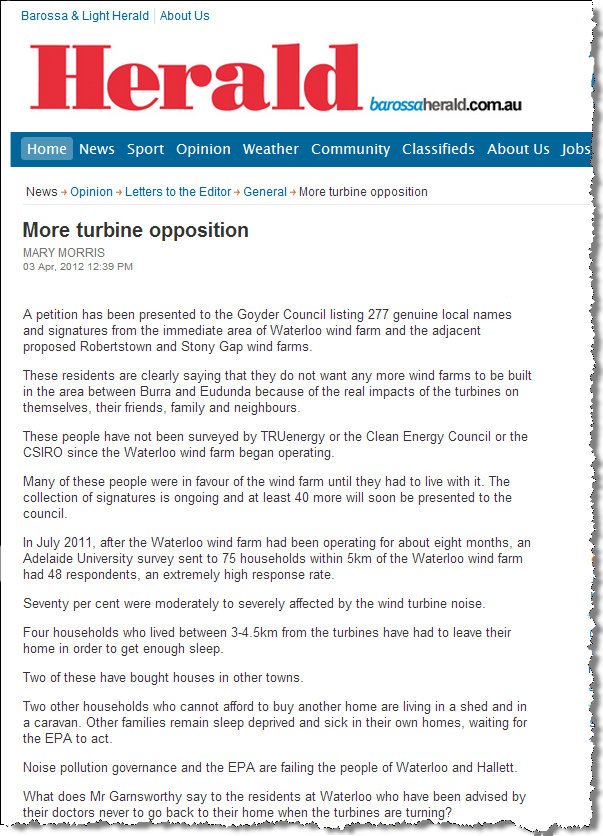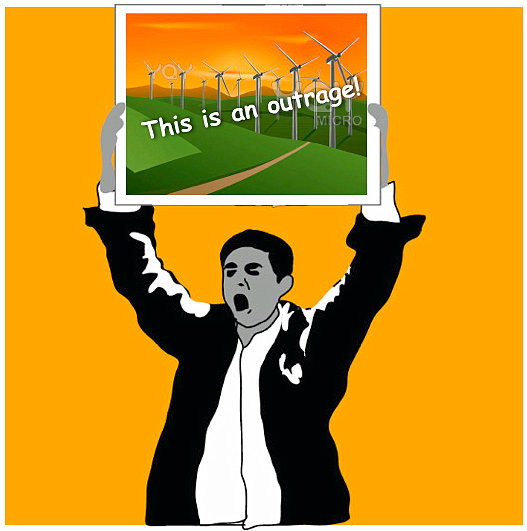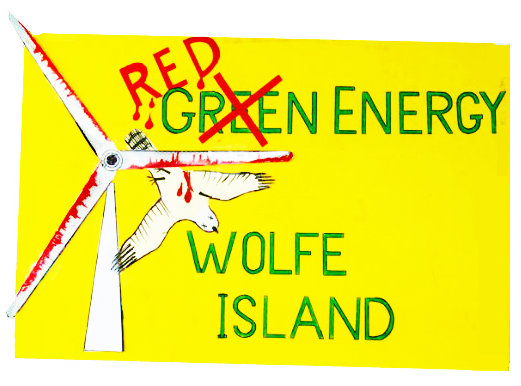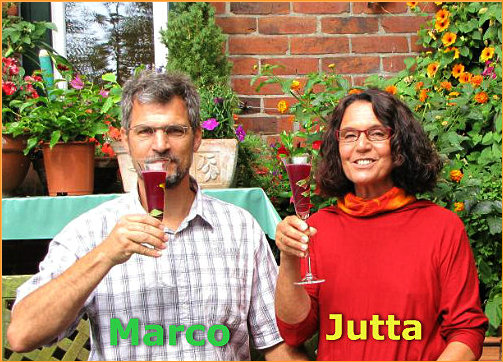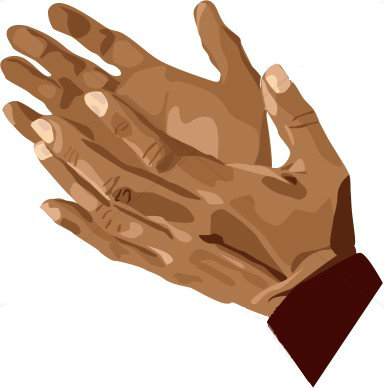Suggested Guidelines (March 2012)
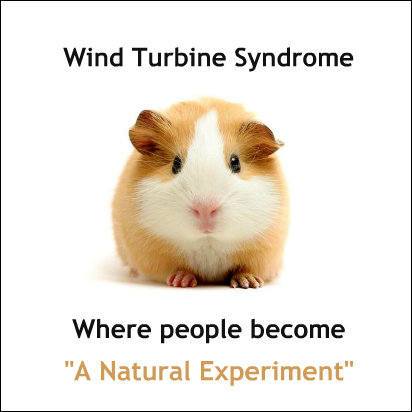
—Sarah Laurie, MD*
Medical Director
The Waubra Foundation
This information has been compiled after consultation with a number of researchers, clinicians and acousticians internationally who are working in the area of adverse health effects of industrial noise in the lowest frequencies—below 200Hz. Any errors or omissions are solely mine.
Information has been gathered from relevant literature, together with field observations from affected residents, workers and visitors exposed to sound energy in frequencies from 0-200Hz (including predominantly wind turbine sound and vibration energy), and from medical records and treating doctors, where these have been available.
The following are suggestions, only, in an area with limited knowledge and precious little hard data, and will need to be adapted according to individual clinical circumstances and presenting pathology. The guidelines will be updated as more information is gathered.
It is strongly suggested that the original studies and reports be consulted, especially the work of the clinicians and researchers who have led the way.
Grateful thanks go to many people, above all to fellow health professionals who have refused to be silenced:
» Amanda Harry, M.D., UK General Practitioner, with her original work in 2003.
» David Iser, M.D., Australian General Practitioner, for “blowing the whistle” in 2004.
» Nina Pierpont, M.D., Ph.D., USA Pediatrician and Behavioral Medicine, for her 2009 study of 10 affected families to ascertain the risk factors for “wind turbine syndrome,” along with proposing a pathophysiological mechanism.
» Robert McMurtry, M.D., Carmen Krogh, Chris Hanning, M.D., Michael Nissenbaum, M.D., Carl Phillips, Ph.D., and the other members of the Society for Wind Vigilance.
Grateful thanks to Noel Kerin, M.D., Occupational Physician from Ontario, Canada, who was the first to draw my attention to the relevance of cortisol in this rapidly escalating global public health problem, and to G.M. for so generously sharing his cortisol pathology results with us.
.
Background Information for Health Practitioners
Acute Exposure to ILFN
Acousticians have been aware for many years that acute exposure to infrasound and low frequency noise (ILFN), such as wind turbines are now known to emit in significant amounts, produces a host of clinical symptoms and health problems.1,2 For example, Professor Geoff Leventhall, a British acoustics advisor to the wind industry, has admitted publicly that he has long been aware of the symptoms Dr Nina Pierpont identifies as “wind turbine syndrome.”3 In other words, the existence of a distinct pattern of symptoms—now generally known as “wind turbine syndrome”—occurring in some people and correlating with acute exposure to low frequency noise sources (including wind turbines) is apparently not disputed by at least one high profile acoustics consultant to the wind industry.
What is now disputed by the wind industry is whether there is a “direct” causal link between wind turbines and reported health problems. The current fashion among wind developers, their legal advisers and paid medical experts is to blame reported symptoms on “stress” caused by “scaremongering” medical practitioners who have investigated and reported the occurrence of turbine-associated health problems.4,5,6 Those who become ill are themselves blamed, in pejorative language, for their illness—generally based on opinion instead of research, and rather than consulting the treating medical practitioners.7
The symptoms are invariably referred to as an “annoyance” by acousticians—a term that perniciously masks and distorts the range of pathology and gravity of illness directly related to exposure to sound energy in the lowest frequencies.8
Meanwhile, government health agents universally deny there is a problem, claiming there is “insufficient peer-reviewed published credible evidence”—even as they turn a blind eye to voluminous clinical reports of adverse events.9
Since there are no readily available diagnostic tests to confirm exposure and sensitivity to infrasound and low frequency noise, what is required is a careful clinical history (detailed contemporaneous patient personal health journals can help with this) and, where possible, correlation of symptoms with actual acoustics measurements.
These acoustic measurements need to cover the full sound spectrum, which can measure the “dose” of sound energy the affected individual is being exposed to inside his (her) home or workplace (wherever the symptoms are being experienced). This is expensive, and has not previously been done anywhere in the world, with the recent exception of several acousticians in the USA and in Australia, funded by philanthropists and concerned rural residents.10,11
Most recently, episodes of acute pathology related to adrenaline surges have been reported in both Ontario and in Australia, and have included Tako Tsubo heart attacks and acute hypertensive crises.12 The usual known causes have not been identified in these cases (e.g. phaeochromocytoma, sudden severe shock), but have occurred when exposed to operating wind turbines. The Tako Tsubo events have also been reported in residents exposed to other sources of industrial noise (e.g. coal mining) where ILFN has also been measured and residents have likewise reported the characteristic range of symptoms indicating sensitization to ILFN exposure.
Prolonged Exposure to ILFN
Prolonged exposure to wind turbine noise, including the infrasound and low frequency noise components, appears to be related to a range of additional and different pathology when compared to acute exposure, much of which could be explained by:
• chronically elevated stress hormones, particularly cortisol and its myriad of adverse sequelae for physical and mental health,13
• focal damage in a variety of organs (attributed to oxidative stress in one animal study which trialed the use of antioxidants with infrasound exposure and found they were of benefit).14
Both of these scenarios have been reported in very limited animal studies involving exposure to infrasound, generally on mammals (rodents), and most are reported in the 2001 NIEHS Toxicology of infrasound literature review.15
Both have also been reported in individual residents, and to a very limited extent have been confirmed by pathology and radiology investigations. They have also been observed in some domestic pets and livestock (dogs, goats and cattle) exposed to wind turbine ILFN. Such reports have been dismissed as “anecdotes,” which indeed they are.
But “anecdotes,” which are thorough objective clinical evaluations of individual circumstances, are extremely important, not just for the individual patients, but also to contribute to a body of knowledge about the consequences of chronic exposure to wind turbine noise, currently virtually non-existent in the published animal and human health research literature.
This lack of data does NOT mean there is no problem.16 It means the research has not yet been done. Clinical data collected from affected residents will assist with expanding the clinical knowledge base, especially if there is a baseline documentation of pre-exposure health status.
Consequences of Chronically Elevated Cortisol
There is mounting peer reviewed published evidence that chronic stress, shown biochemically by chronically elevated cortisol in particular, has a range of serious health consequences. This is not a new concept.
One of the leading researchers in this area is Bruce McEwen. In an article in the New England Journal of Medicine in 1998, he stated: “When the brain perceives an experience as stressful, physiological and behavioural responses are initiated, leading to allostasis and adaptation. Over time, allostatic load can accumulate, and the overexposure to mediators of neural, endocrine, and immune stress can have adverse effects on various organ systems, leading to disease.”17
Just a few of many relevant examples of the many serious consequences of this chronically elevated cortisol include:
• increased infections (e.g. noticeably increased dental infections, sinusitis and respiratory infections are being reported by residents),
• connections between chronically elevated cortisol and decreased Brain Derived Neurotrophic Factor (BDNF); and decreased size of the hippocampus, which in humans has been associated with depression.18 (Depression post exposure to ILFN is also commonly reported).
The Additional Sequelae from Sleep Deprivation
In addition, the commonest problem which residents living 24/7 near wind turbines report is chronic severe sleep deprivation. This is not only caused by the audible noise of the turbines, but also appears to be caused by the inaudible noise (ILFN) sound and vibration energy, on the basis of consistent reports from residents internationally, although this is yet to be specifically demonstrated with concurrent sleep and acoustic data collection.
People out to distances of 10km from 3MW turbines placed on a range of hills in Australia (Waterloo wind development) report they are awakened, regularly, in the early hours of the morning in an anxious, frightened, panicked state, coinciding with turbine operation. Sometimes this will happen repetitively, night after night. This description is characteristic, around the world, and from many reports is NOT related to audible noise emissions from the wind turbines, especially as distances increase away from the nearest wind turbine.
Just one turbine can do this (Falmouth USA is a well known example).19 The recent acoustic report from Falmouth USA by Rand and Ambrose has clearly linked the noise emissions in the lowest frequencies with this characteristic sleep disturbance. For many people, sound energy below 20Hz is inaudible.
The occurrence of severe sleep disturbance alone, regardless of the cause, is well-known to have a wide range of deleterious health effects which are additional to those already mentioned above. These include, but are not limited to:
• increased risk of cardiovascular diseases (hypertension, atherosclerosis)20
• diabetes
• increased risk of accidents (especially important with farming communities using farming equipment and heavy vehicles)
Exacerbation of Pre-Existing Conditions
There is a range of pre-existing conditions, which are being reported by affected residents and some of their treating doctors, to be exacerbated with chronic exposure to operating wind turbines. They follow the characteristic pattern of worsening with exposure, and returning back to “baseline” when away from home or when the wind turbines are turned off.
This pattern is crucial to differentiating between those conditions which are related to exposure to operating wind turbines and those which are not. Sometimes this is clear, but often the changes are more subtle initially, and it may be necessary for residents to repeat the exposure/non-exposure pattern a number of times in order to be sure.
Some of the conditions which have been reported in Australia to fit this pattern include exacerbations of pre-existing but stable:
• angina and hypertension
• diabetes
• post traumatic stress disorder, depression and anxiety
• inflammatory conditions such as arthritis, lupus, and asthma
Some of these exacerbations have been sufficiently serious for their treating specialists (especially cardiologists) to strongly advise that these residents never go back home, unless the turbines are off. Some are now living in a shed or caravan elsewhere, having left comfortable homes. Home abandonment has been reported to be occurring in Europe, the UK, Canada and the USA.
Vibro-Acoustic Disease
There is an important body of work by Professor Mariana Alves-Pereira, Dr Nuno Castelo-Branco (Portugal) and co-researchers, over many years, investigating various pathologies occurring in a population of aviation workers, resulting from chronic exposure to infrasound and low frequency noise, particularly from aviation sources.21 Their work commenced with the observation by Castelo-Branco of a 20-fold increase in the incidence of late onset epilepsy in these workers compared to the general population.
Their work has identified characteristic tissue changes which occur with chronic exposure to ILFN. One of these is collagen thickening, and has more recently been identified by them in some cases of human and animal (horse) exposure to ILFN from wind turbines.22 Other relevant pathologies noted by that group include brain pathology and lung ciliary function disturbances.
.
What “Dose” of ILFN Are People Being Exposed to?
What Is Safe with Chronic Exposure to ILFN at Lower Sound Pressure Levels over Long Periods of Time?
We don’t yet know what is “safe,” particularly with chronic exposure.23 Symptoms and health problems are widely reported to worsen over time with ongoing exposure to ILFN, and to improve when exposures are reduced or eliminated (e.g. when people permanently leave their homes).
Nor do we know the actual individual exposures, especially inside homes.
Firstly, there is very little publicly available data measuring sound energy in these frequencies around wind developments, as it is generally restricted to measurement of outdoor audible sound above 200Hz (in dBA), which excludes infrasound (0-20Hz) and low frequency noise (20-200Hz), and excludes indoor measurements.
Secondly, the recent groundbreaking work by two American noise engineers, Rob Rand and Steve Ambrose, at Falmouth (MA), has shown that the sound energy people are exposed to inside their homes appears to be significantly different from the sound energy outside their homes occurring at the same time.24 So, outdoor measurements in dBA (currently used globally by the wind industry and regulatory authorities) is not measuring what we think is the problem for many people, which is particularly the INDOOR frequencies between 0-200 Hz. This involves not just the actual sound energy, but the proportion of this ILFN as the total sound energy exposure at the time.
Infrasound and low frequency sound energy are extremely penetrating through the walls and the roof of a home (even if well insulated), whereas audible sound waves cannot penetrate as well. Hence the proportions of sound energy present inside the home can change markedly compared to that being measured outside the home at the same time. This is just what was demonstrated at Falmouth.
These two acousticians themselves became sick in the home in Falmouth where they were taking measurements, within 20 minutes of being there. [Editor’s note: It is significant that neither Ambrose or Rand were sleeping, or attempting to sleep, during the period they became ill.] Their symptoms coincided with periods when the turbines were turning, and correlated with measurement of infrasound inside the home. Their report is well worth reading, as are the resident’s accounts of their experiences.
There are signs that at some locations, seismic transmission of energy waves may also play a part. A simple way of checking for this is to ask the resident if there is a sensation of vibration coming up through the pillow, or water in a glass visibly moving when on the bedside table. Both these may be indicators of possible seismic transmission. This is important, as the presence of this additional very low frequency energy may be implicated in more rapid onset of serious adverse health effects.25
We do not know what “dose” of sound and vibration energy is producing these symptoms in people, and we do not know what a “safe” cumulative exposure is, either. But observations of how some people’s health can rapidly deteriorate over time make this thorough acoustic assessment urgent and necessary to advocate for, on behalf of the affected residents.
The Acoustic Assessment needs to be:
• full sound spectrum and include vibration if indicated, with monitors and microphones capable of measuring very quiet background noise, and down to very low frequencies,
• inside and outside the home or workplace, concurrently,
• completely independent of the wind developer, and conducted “blind,”
• over a sufficient time period and occur under wind and weather conditions when symptoms are being experienced.
.
Recommended Further Reading
Harry, Dr Amanda “Wind turbines, Noise and Health” (2007)
Pierpont, Dr Nina “Wind Turbine Syndrome: A Report on a Natural Experiment” (K-Selected Books, 2009)
McMurtry, Dr Robert “Toward a Case Definition of Adverse Health Effects in the Environs of Industrial Wind Turbines: Facilitating a Clinical Diagnosis” Bulletin of Science Technology and Society 2011 31:316
Ambrose, Stephen & Rand, Robert “Bruce McPherson Infrasound and Low Frequency Noise Study” (2011)
.
Suggestions for Pre-Construction Health Assessments
Clinical History
Useful specific features to record include:
• history of motion sickness, migraines, existing inner ear conditions
• comprehensive documentation of past noise exposure
• documentation of past medical and psychiatric conditions,
Examination:
• blood pressure
• cognitive assessment (in order to detect subtle changes in cognition and memory which have been observed to occur post exposure). Dr Nina Pierpont has suggested the following:
The Montreal Cognitive Assessment Battery: can identify mild cognitive impairment
The Trailmaking test: a timed, simple test of spatial and divided attention
• mental health assessment questionnaires (for later comparison with repeat testing), to document current mental state with particular reference to symptoms of anxiety, depression, & PTSD
Baseline Pre exposure Investigations to be considered:
• baseline ECG (heart attacks and Tako Tsubo episodes are being reported to occur in association with operating wind turbines)
• baseline routine bloods including kidney and liver function, complete blood picture, thyroid function, fasting blood sugar and Hba1c
• baseline night time salivary cortisol (for comparison with later on when exposed to operating wind turbines)
What residents can do:
• keep thorough personal health journals contemporaneously
• monitor their own blood pressures, if indicated
• actively try and manage their stress, and try and organize time away from exposure to operating turbines if they need to, and can
• consider a trial of antioxidants (given their reported benefit to rodents in one experiment with prolonged exposure to infrasound)
Post construction history, examination & investigations (as indicated by the clinical context and presenting problems):
• detailed history of new symptoms with correlation of exposure to operating wind turbines (personal health journals can help here)
• comparative nighttime salivary cortisol, and more extended serum cortisol testing (has been found to be markedly elevated, but returns to normal when repeated again after cessation of exposure to ILFN, when residents report feeling “better”)
• comparative repeat cognitive and mental health assessments, as indicated
• other investigations which may be indicated in specific situations where specific pathology is being identified include:
» 24 hour blood pressure monitoring
» sleep studies (comparing “in home” and “away from home,” if possible)
» specific blood pathology indicated by the clinical picture (kidney, liver, CBP, clotting, thyroid function, blood glucose & Hba1c)
» specific radiological investigation where focal pathology is suspected, including brain MRI where indicated (e.g. cognitive defecits being reported, suspicion of late onset epilepsy)
.
Footnotes
1. Leventhall, Benton & Pelmear May 2003, “A report for DEFRA: A review of published research on low frequency noise and its effects.”
2. NIEHS (National Institute of Environmental Health Sciences) November 2001, “Infrasound: Brief Review of Toxicological Literature.”
3. Professor Leventhall’s presentation to the National Health and Medical Research Council of Australia’s forum on 7th June, 2011 in Canberra.
4. Professor Gary Wittert, in evidence given during Paltridge v Acciona & DC Grant, January 2011, ERD Court, Adelaide, South Australia.
5. Oral testimony given by various wind developers including Mr Jonathon Upson, of Infigen, to the Australian Federal Senate Community Affairs Committee Inquiry into the Social and Economic Effects of Rural Wind Farms, particularly on March, 29th 2011 in Melbourne, transcript available from 202.14.81.34/hansard/senate/commttee/S13806.pdf
6. Oral testimony given by Mr Simon Holmes a Court, Chairman of Hepburn Wind, in the above inquiry, in the Hansard transcript cited above.
7. Chapman, Professor Simon (a sociologist) in a commissioned piece in PERSPECTIVES “Wind Farms and Health: who is fomenting community anxieties” Medical Journal of Australia, 195 (9) 7 November, 2011 p 495. See Dr Daniel Shepherd’s reasoned response to the “ad hominem” attacks in his letter in a subsequent edition of the MJA 196(2) 6 Feb 2012.
8. Pederson and Waye, “Perception and annoyance due to wind turbine noise: A dose-response relationship” in J Acous. Soc. Am. 116 (6) 2004 pp 3460-70.
9. The most recent example is from the Massachusetts Department of Environmental Protection, “Wind Turbine Impact Study” January 2012.
10. Stephen Ambrose and Robert Rand “The Bruce McPherson Infrasound and Low Frequency Noise Study” Falmouth, December, 2011.
11. Cooper, Steven, The Acoustic Group “Peer Review of the Acoustic Assessment, Flyers Creek Wind Farm” December, 2011.
12. Laurie, Dr Sarah Medical Director, Waubra Foundation, reported in Submission to the Australian Federal Senate Inquiry into Rural wind Farms, February 2011, accessible via senate submissions or here.
13. McEwen, Bruce “Protective and Damaging Effects of Stress Mediators” NEJM 1998, 338 171-179.
14. Dadali, VA et al. “Effects of infrasound and protective effect of adaptogens” in experimental animals, Gig. Sanit. (1):40-43 (Russian) MEDLINE record 92406047 cited as reference no 58 in NIEHS November 2001, op. cit.
15. NIEHS November 2001, op. cit., especially pp 16-30 e.g. Nishimura K,1988 “The effects of infrasound on pituitary adrenocortical response and gastric microcirculation in rats” J Low Frequency Noise & Vibration 7(1):20‐33.
16. See Professor Warwick Anderson’s comments as CEO of the National Health and Medical Research Council in his oral testimony to the Federal Senate Inquiry into Rural Wind Farms p 86. 202.14.81.34/hansard/senate/commttee/S13730.pdf
17. McEwen, Bruce op. cit.
18. Warner-Schmidt JL, Duman RS (2006). “Hippocampal neurogenesis: Opposing effects of stress and antidepressant treatment” Hippocampus 16 (3): 239–49.
19. Stephen Ambrose and Robert Rand op. cit.
20. Capuccio F et al., “Sleep duration predicts cardiovascular outcomes: A systemic review and meta-analysis of prospective studies” European Heart Journal (2011) 32, 1484-1492.
21. Mariana Alves-Pereira and Nuno Castelo-Branco, Review “Vibroacoustic disease: Biological effects of infrasound and low-frequency noise explained by mechano-transduction cellular signaling, Progress in Biophysics and Molecular Biology 93 (2007) 256-27.
22. Professor Mariana Alves-Pereira’s presentation to the NHMRC forum on Windfarms and Health on 7th June, 2011 in Canberra.
23. NIEHS op. cit. comments on page 3, last paragraph.
24. Stephen Ambrose and Rob Rand op. cit.
25. Dr Bob Thorne, personal communication, confirmed with my own observations from field work, especially at Waterloo in South Australia and Cape Bridgewater in Victoria.
.
If you require any further information about any of the information and sources cited in this document, please do not hesitate to contact me at sarah@waubrafoundation.com.au.
*Editor’s note: Dr. Laurie’s BMBS degree (Bachelor of Medicine, Bachelor of Surgery), earned at the Flinders University School of Medicine (Australia) is equivalent to the MD in the USA. We show her degree as “MD” since American readers don’t have a clue what BMBS stands for.


